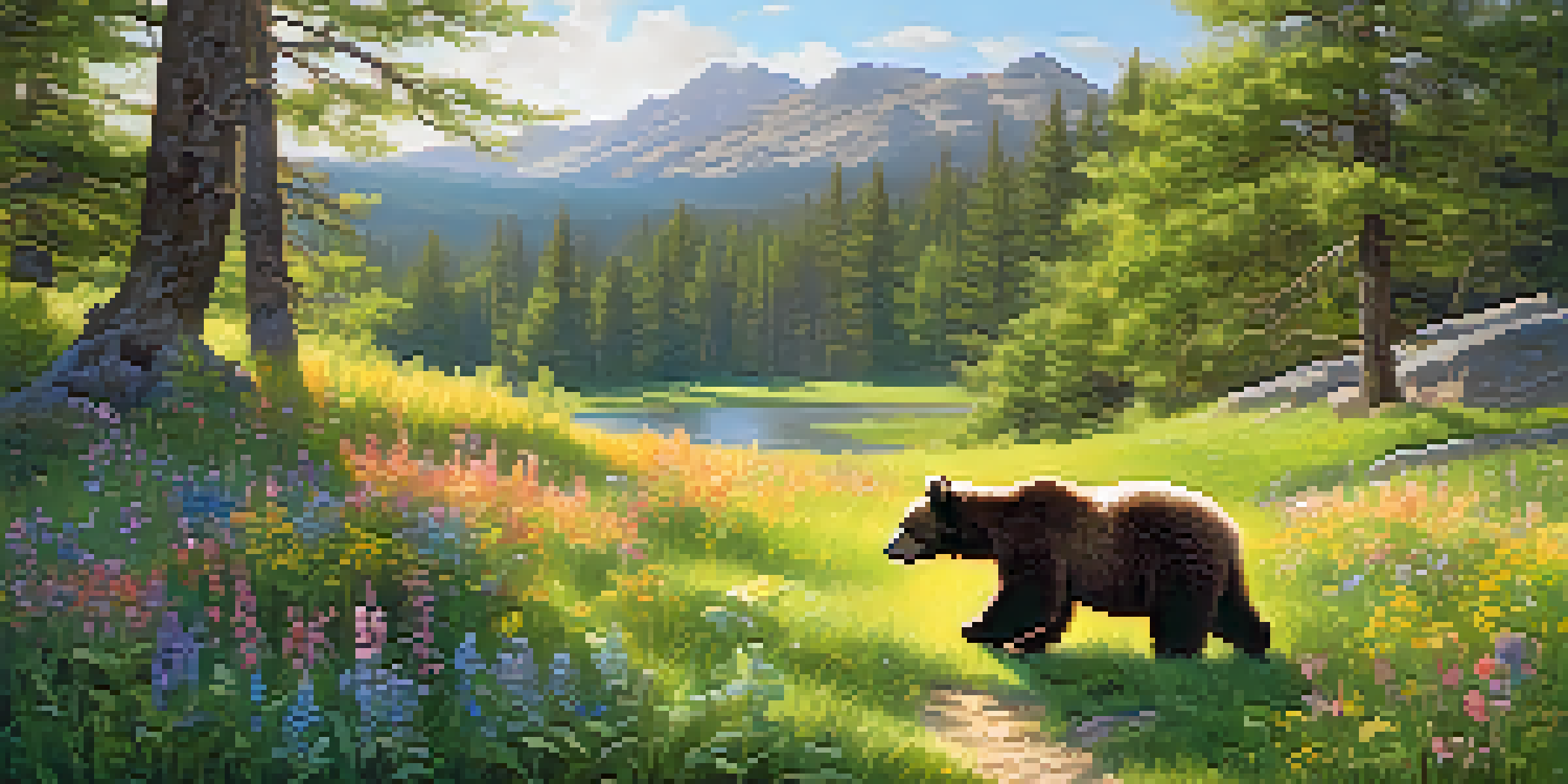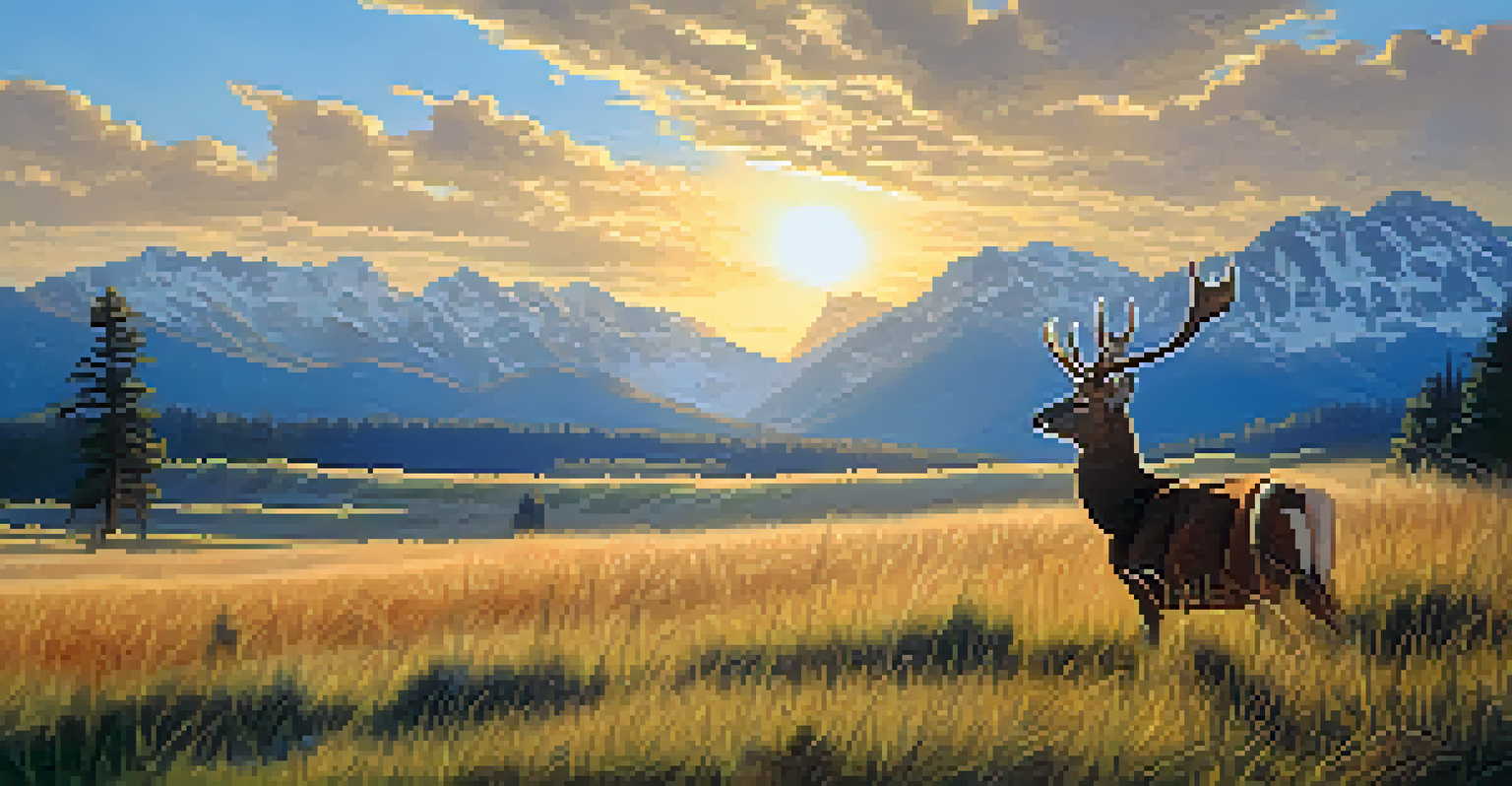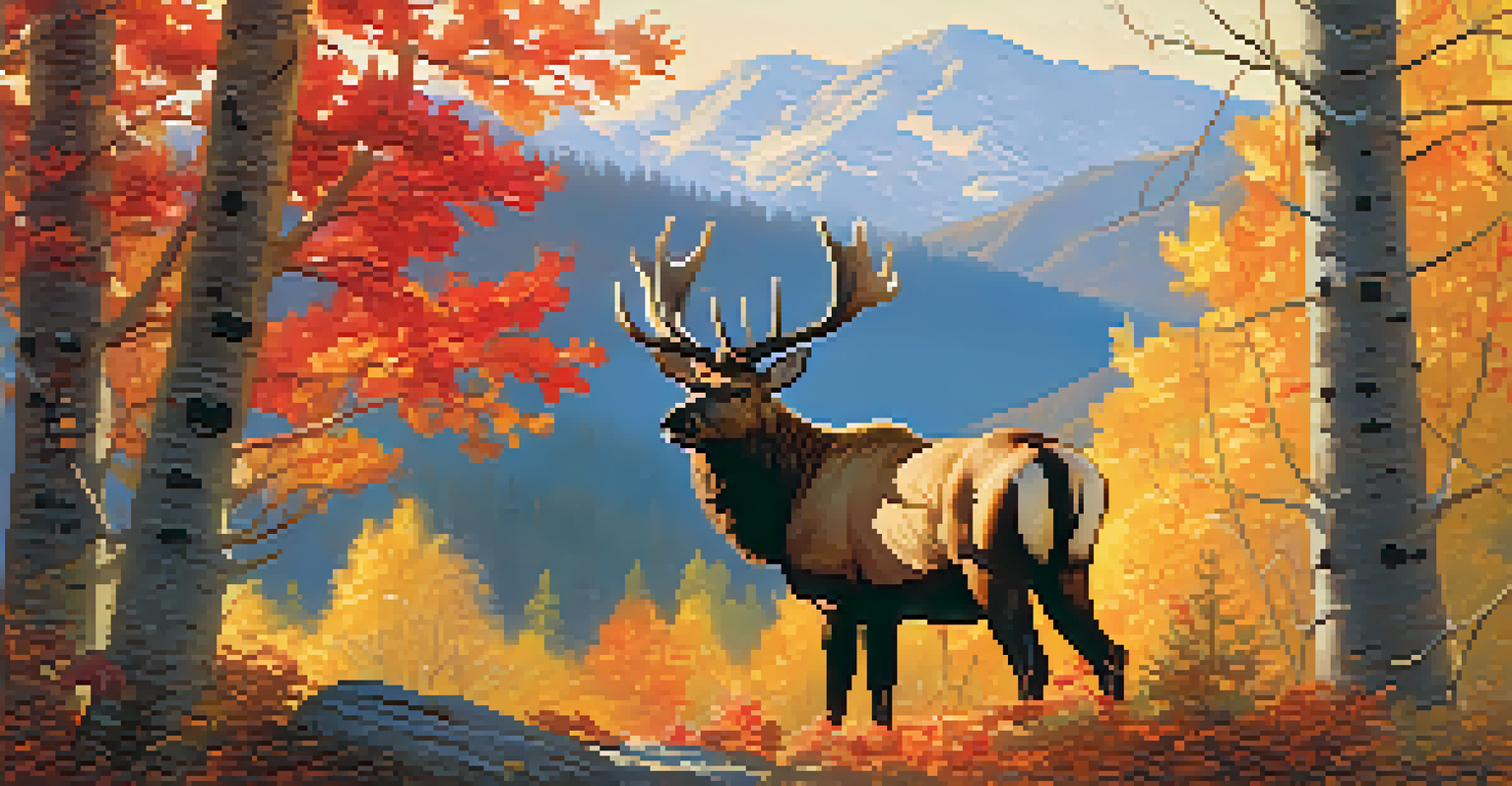Best Time of Year for Wildlife Watching in National Parks

Spring: A Season of New Beginnings for Wildlife
As winter melts away, spring brings forth a vibrant awakening in national parks. This is the time when many animals give birth to their young, making it a thrilling season for wildlife watching. From playful bear cubs to fawns taking their first steps, the energy of new life is palpable.
In every walk with nature one receives far more than he seeks.
Wildflowers start to bloom, providing a beautiful backdrop to your wildlife encounters. Birds return from their migrations, filling the air with their songs and colors. It’s not just the mammals; spring is also prime time for spotting migratory birds and observing their nesting behaviors.
However, while you're out there enjoying the sights, it's essential to maintain a respectful distance from the wildlife. Mothers with their young can be particularly protective, so always prioritize safety for both you and the animals.
Summer: Peak Season for Wildlife Activity
Summer is often considered the prime time for wildlife watching, as animals are highly active and visible. The warm weather makes it easier to explore the parks, and many species are out foraging and raising their young. Hiking during this season can lead to incredible sightings, from deer grazing in meadows to eagles soaring overhead.

With longer daylight hours, early mornings and late evenings are particularly fruitful times for wildlife encounters. Animals are more active during these cooler parts of the day, making it easier to spot them in their natural habitats. Plus, summer evenings often bring beautiful sunsets to enhance your experience.
Wildlife Watching Across Seasons
Each season offers unique wildlife experiences, from the birth of young animals in spring to the vibrant colors of fall.
Just keep in mind that with the increased number of visitors during the summer months, some parks might feel busier. Planning your visits during weekdays or off-peak hours can provide a more serene wildlife watching experience.
Fall: A Colorful Transition and Animal Preparations
As summer transitions to fall, national parks become a canvas of vibrant colors, making it a picturesque time for wildlife watching. Animals are busy preparing for the winter months, which can lead to fascinating behaviors to observe. For example, bears are often seen foraging to build their fat reserves, and elk are in the midst of their mating season, displaying impressive antler displays.
The earth has music for those who listen.
The crisp air and changing leaves create a stunning backdrop for your wildlife adventures. Many migratory birds are also preparing to leave, so it's a great time to catch them as they gather in flocks. Keep your binoculars handy to spot different species as they make their way south.
Additionally, the cooler temperatures make for comfortable hiking conditions, allowing you to explore more of the park's hidden gems. Just be sure to dress in layers and prepare for the occasional chilly breeze.
Winter: A Unique Perspective on Wildlife
While winter may seem like a quiet time for wildlife, it actually offers unique opportunities for observation. Many animals adapt to the cold and can be seen in their winter coats, which can be quite a sight. For instance, wolves and foxes become more visible against the white snow, making for extraordinary viewing experiences.
Birdwatching can also be rewarding in winter, as some species remain active and even become more visible when their surroundings are less populated. If you're lucky, you might catch sight of a majestic bald eagle perched in a tree or a snow-covered owl.
Best Parks for Year-Round Sightings
National parks like Yellowstone and Everglades provide diverse wildlife watching opportunities throughout the year.
However, winter wildlife watching comes with its challenges. It's essential to dress warmly and be prepared for icy trails. Some parks may have limited access during this season, so always check conditions before you go.
Best Parks for Wildlife Watching Year-Round
Certain national parks are renowned for their wildlife sightings throughout the year. Yellowstone National Park is a prime example, where you can witness diverse species including bison, wolves, and bears in their natural habitats. Its varied ecosystems make it a hotspot for wildlife enthusiasts regardless of the season.
Another great option is Everglades National Park, famous for its unique subtropical wildlife. From alligators to manatees, the park offers an array of opportunities to observe animals year-round, especially during the dry season when wildlife congregates around water sources.
Each park has its unique charm and species, so consider what kind of wildlife you’re most interested in seeing. Researching specific parks will help tailor your wildlife watching experience to your preferences.
Planning Your Wildlife Watching Adventure
When planning your wildlife watching trip, timing is crucial. Each season offers different opportunities, so consider what animals you want to see and when they are most active. Researching seasonal patterns can significantly enhance your chances of sightings.
Additionally, consider joining guided tours or ranger-led programs. These experts can provide insights into animal behavior and the best locations for sightings, making your experience even more rewarding. Plus, it’s a great way to meet fellow wildlife enthusiasts.
Respecting Wildlife Habitats
Maintaining a safe distance and following park regulations are essential for protecting wildlife and their natural behaviors.
Lastly, remember to bring the right gear. Binoculars, a sturdy camera, and appropriate clothing for the weather are essentials that can enhance your wildlife watching experience.
Respecting Wildlife and Their Habitats
Respecting wildlife and their habitats is crucial during your adventures. Always maintain a safe distance from animals, and never attempt to feed them. Approaching too closely can stress animals and disrupt their natural behaviors, potentially putting both you and the wildlife at risk.
Staying on marked trails and following park regulations helps protect fragile ecosystems. Remember that your actions can have a lasting impact on the environment, and respecting wildlife is a vital part of being a responsible visitor.

By fostering a respectful attitude towards wildlife, you can help ensure that future generations can enjoy the same incredible experiences in national parks.